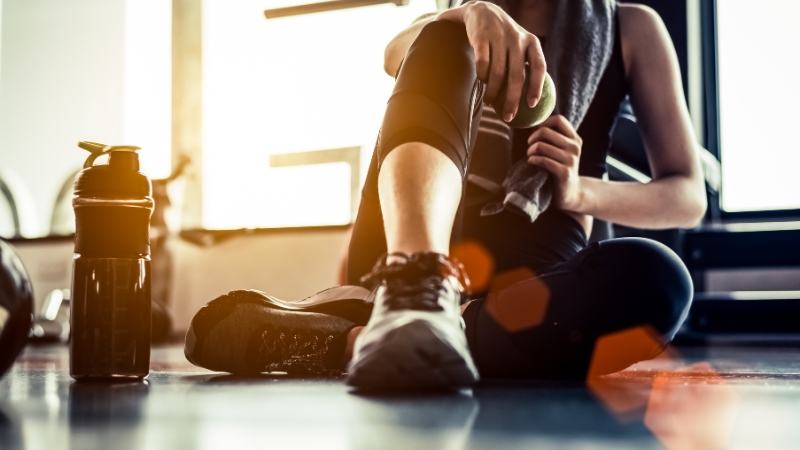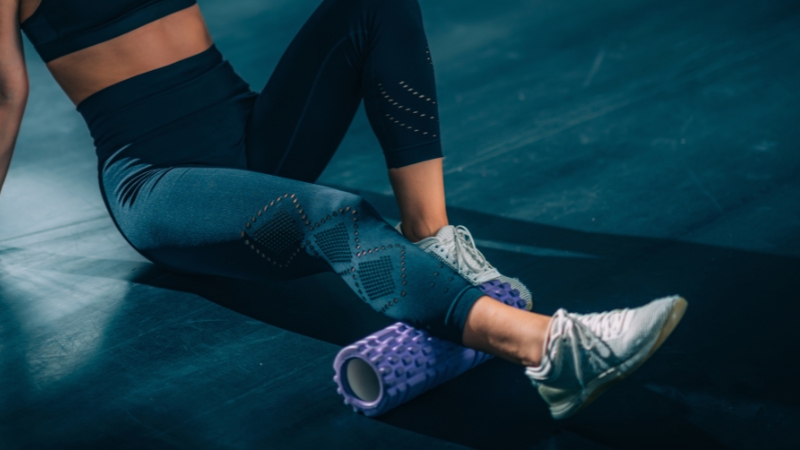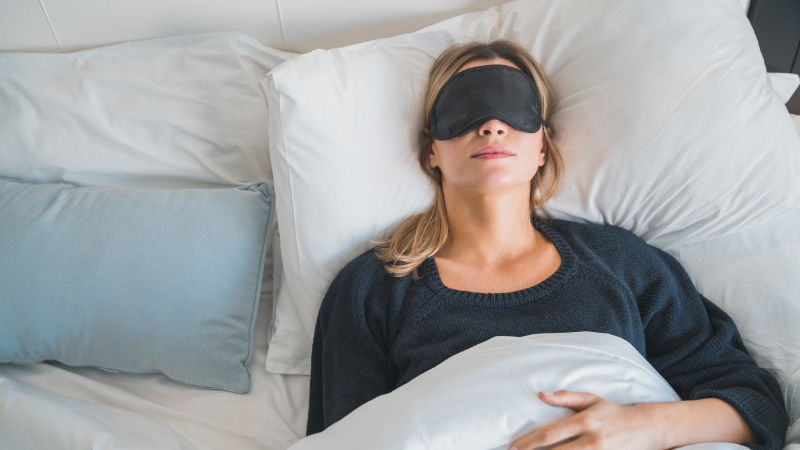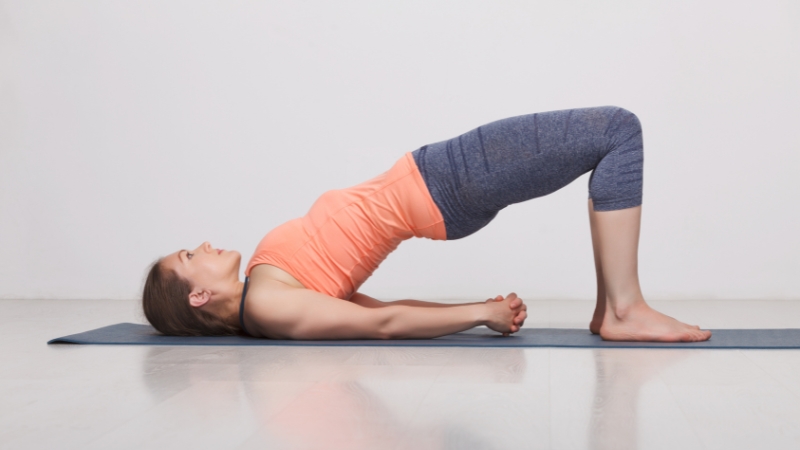
Share Post:
Let’s talk honestly—endometriosis isn’t just a “bad period.” It’s a full-body condition that can impact your energy, digestion, mood, and yes, your ability to move and exercise the way you want.
Pelvic pain, abdominal bloating (aka the infamous “endo belly”), fatigue, and tension that feels like your muscles are bracing for battle, those symptoms can show up even on what’s supposed to be a “good” day.
But here’s the deal: movement matters. And not just in a “fitness influencer on Instagram” kind of way. Gentle, intentional workouts can actually help reduce pain, boost circulation, improve posture, and support the pelvic floor.
The trick is choosing movements that respect what your body’s dealing with, rather than forcing it into routines designed for a totally different context.
So if you’ve ever Googled something like “can I do leg day with endometriosis?” or “is it safe to work my abs with pelvic pain?” you’re in the right place.
Table of Contents
ToggleCore Work: Building Strength Without the Strain
When people think “core,” they often picture crunches or planks. But for someone with endo, especially if there’s scar tissue or involvement of abdominal organs, those moves can be too much.
We want to engage the deep core—the transverse abdominis, pelvic floor, and obliques, in a gentler, smarter way.
Try: Supine Marches (a.k.a. Marching Bridges)
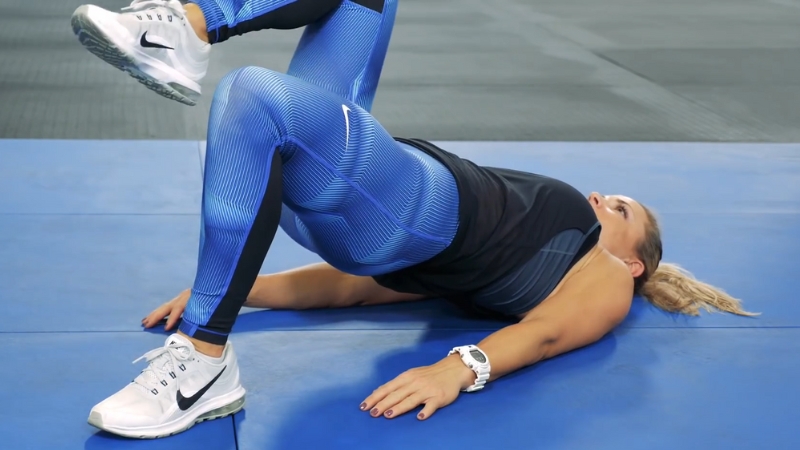
How to do it:
- Lie on your back with knees bent, feet flat on the floor, arms at your sides.
- Engage your core like you’re zipping up tight jeans.
- Slowly lift one knee toward your chest, keeping your pelvis stable.
- Lower and repeat on the other side.
Reps: 8–10 per leg, 2–3 rounds
Avoid: Full Sit-ups, V-Ups, and Intense Oblique Twists
Those kinds of moves increase intra-abdominal pressure like nobody’s business, and they can flare pain or tension in the pelvic region. Not worth it.
Try: Dead Bugs (with a pillow or stability ball)
Dead bugs are one of those deceptively hard moves that are amazing for engaging the deep core without stress.
You’ll start by lying on your back with your arms reaching up toward the ceiling and your knees bent in a tabletop position. For a bit more control and connection, place a small pillow or a squishy ball between your hands and knees.
As you exhale, slowly lower one arm and the opposite leg toward the floor. Keep your lower back gently pressing into the mat, no arching.
Then return to the center and switch sides. Everything should move slowly and deliberately, like you’re doing core Pilates in slow motion.
What makes dead bugs so perfect for endo is that they teach your brain and core to stabilize while moving, without crunching or bracing hard.
They also allow for a ton of customization. If your symptoms are flaring, you can keep the range of motion small. If you’re feeling good, go for a bigger reach and extend fully.
How to do it:
- Lie on your back with arms pointing to the ceiling and knees bent at 90 degrees.
- Option: Place a small pillow or ball between your knees and hands.
- Slowly lower your right arm and left leg toward the floor, keeping the core tight.
- Return to the start and switch sides.
Reps: 6–8 each side, 2–3 rounds
Try: Seated Pelvic Tilts (great for flare days)
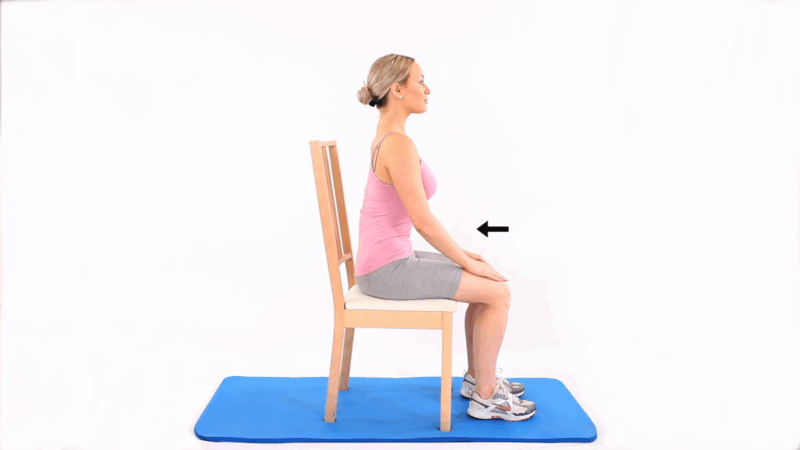
Now, let’s talk about pelvic tilts. These are underrated, especially for people dealing with pelvic pain.
Sit on a chair or a stability ball with your feet flat on the ground and spine tall. From here, gently tip your pelvis forward and backward, almost like you’re rocking a bowl of water.
There’s no need to exaggerate the movement; keep it small and focused.
This exercise helps unlock tension in the lower back and gently reintroduces movement to the pelvis.
It’s especially helpful during flare-ups when lying down feels uncomfortable, but you still want to move a bit.
How to do it:
- Sit tall on a chair or stability ball.
- Gently rock your pelvis forward and back, as if you’re tipping a bowl of water.
- Keep shoulders relaxed, breathe evenly.
Reps: 10–15 tilts, slow and controlled
It sounds so simple, but that little movement can reconnect you to your core and relieve tension in the lower back.
Lower Body Strength Without Compression or Tension
The lower body is often where people lose strength, not because the muscles aren’t working, but because pain and fatigue get in the way of consistent training.
Add in poor sleep, inflammation, and tension from guarding the pelvic area, and you’ve got a recipe for tight hips and underused glutes.
But when done thoughtfully, lower body exercises can help relieve pelvic tension.
Strong glutes, hamstrings, and hips give your body better alignment and reduce strain on the pelvis and lower back.
Try: Glute Bridges (with or without a band)
This is a staple for a reason. Lie flat on your back with knees bent and feet about hip-width apart.
Press through your heels to lift your hips toward the ceiling, squeezing your glutes at the top. Don’t push your hips so high that you arch your back, instead, focus on driving the movement from your butt, not your lower spine.
You can add a loop band above your knees to get more outer hip activation, or hold a small weight on your pelvis for resistance. Glute bridges are fantastic for activating the posterior chain without standing up or putting pressure on your pelvis.
How to do it:
- Lie on your back, knees bent, feet flat.
- Press through your heels to lift your hips.
- Squeeze your glutes at the top, then lower with control.
Reps: 10–12, 2–3 rounds
Option: Add a loop band above the knees for extra resistance.
Avoid: Deep Squats and High-Rep Jump Lunges
Some people with endo feel fine doing squats. Others? Not so much. The key is moderation.
Deep squats can create downward pressure in the pelvis, and jump-style moves might trigger inflammation or joint pain.
Try: Modified Wall Sits (Short Hold Time)
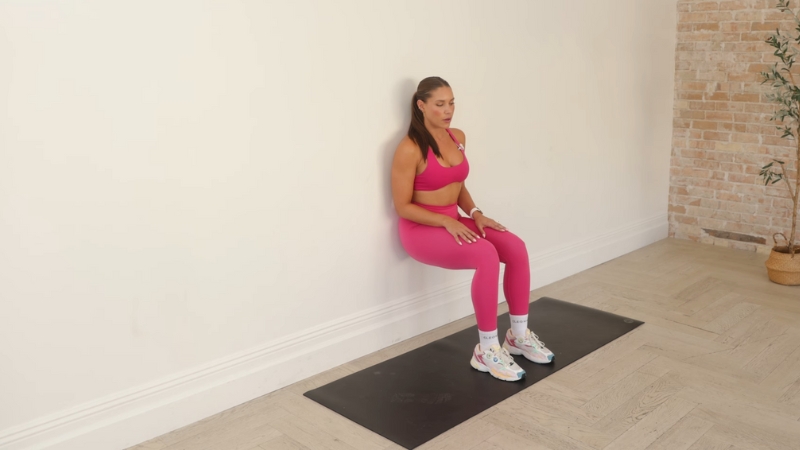
If you want a way to build quad and glute endurance without jumping or lunging, wall sits are your friend.
Stand with your back flat against a wall, then slowly slide down until your thighs are at about a 45-degree angle—no need to drop into a full squat unless your body likes that.
Hold for 15–30 seconds, breathing steadily.
This is an isometric move, which means you’re holding a position and engaging your muscles without moving.
It builds strength without pounding your joints or increasing pressure in the pelvis.
You can also place a small pillow or ball between your knees to gently work your inner thighs, which are part of your pelvic stabilizers, too.
How to do it:
- Stand with your back against a wall, feet hip-width apart and slightly forward.
- Slide down into a mini squat, thighs maybe 45 degrees, not parallel.
- Hold for 15–30 seconds. Rest. Repeat 2–3 times.
Option: Place a soft ball or pillow between your knees to gently activate the inner thighs.
Try: Standing Hamstring Curls (no equipment needed)
@sarahhersefitness Maybe you don’t have access to a leg curl machine or you’re just looking to switch up your leg exercises! Here are 8 great alternatives to a traditional hamstring curl machine. #legdayworkout #hamstringexercises #hamstringcurls #legpump #fitness #gym #gymtok ♬ Drop – Connor Price & Zensery
This is a no-equipment-needed move you can do anywhere. Stand tall next to a chair or wall for balance.
Shift your weight onto one leg, then slowly bend your other knee, bringing your heel toward your glutes.
Focus on squeezing the back of your leg, not kicking or swinging. Then lower and repeat.
It seems like a small motion, but standing hamstring curls wake up the back of the legs, build knee stability, and gently challenge your balance, too.
And they don’t compress your belly or aggravate scar tissue, which is a big win.
How to do it:
- Stand near a wall or chair for balance.
- Shift weight to one leg.
- Slowly bend the other knee, curling the heel toward your glutes.
- Lower and repeat.
Reps: 12–15 per leg, 2–3 rounds
Pelvic Floor: Yes, It Matters (But Maybe Not the Way You Think)
A lot of fitness advice for people with endo skips the pelvic floor, or overemphasizes Kegels. The truth? It depends.
Some people with endo have a tight pelvic floor (not weak), so more Kegels might actually increase pain.
What’s better is focusing on relaxation, coordination, and awareness.
Try: Diaphragmatic Breathing with Pelvic Drop
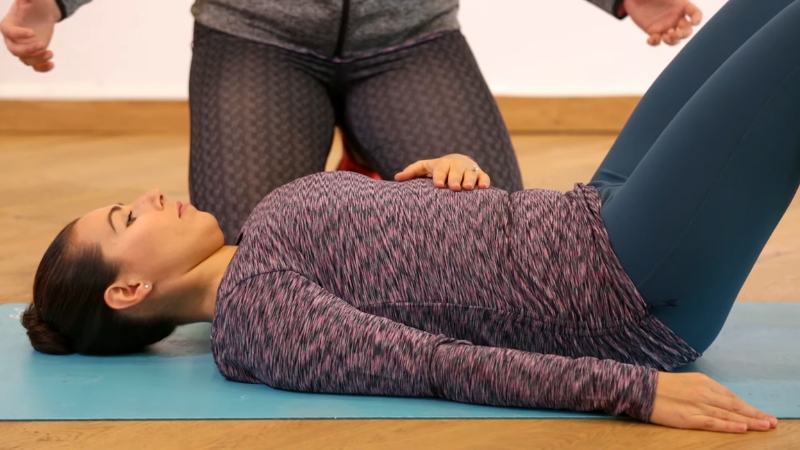
How to do it:
- Lie on your back with your knees bent.
- Inhale through the nose, allowing your belly and ribs to expand.
- Exhale slowly through the mouth, imagining the pelvic floor gently “dropping” like a hammock.
Reps: 6–8 deep breaths, daily if you can
Sample Weekly Routine (Totally Modifiable)
Remember, it’s not about sticking to a rigid routine—it’s about listening to your body and adjusting on the fly. 1. Flare-ups happen. Some weeks, everything feels off. That’s okay. Resting, walking, or stretching might be the most effective “workout” you do. 2. Warm up always. 5–10 minutes of gentle dynamic stretching or even walking in place can make a huge difference in how your body responds. 3. Hydration and inflammation are connected. Dehydration can increase cramping and stiffness, so keep that water bottle handy—especially after any kind of exertion. 4. Skip the no-pain-no-gain nonsense. You’re working with a condition that can be unpredictable. If a move doesn’t feel right, skip it. That’s not weakness—it’s wisdom. You don’t have to avoid working out just because you have endometriosis, but you do need to make smart choices. The right exercises can help manage pain, strengthen the muscles that support your pelvis, and boost your energy without setting you back. It’s not about pushing through pain. It’s about staying consistent, choosing movement that feels good, and giving your body the support it needs, on good days and not-so-good ones. If one move doesn’t work, try another. If a day calls for rest, honor that. Progress isn’t a straight line, it’s a collection of small, kind choices. Got questions about tailoring workouts to your body or need help building a routine? Let me know, happy to help.
Day
Focus
Notes
Monday
Core + Glutes
Supine marches, glute bridges
Tuesday
Rest or gentle yoga
Focus on breath & pelvic mobility
Wednesday
Legs + Core
Wall sits, dead bugs
Thursday
Breathing + Mobility
Seated pelvic tilts, stretches
Friday
Core Focus
Dead bugs, bridges, and hamstring curls
Saturday
Optional light cardio
Walking, cycling, and elliptical
Sunday
Full rest or restorative movement
Gentle stretching, breathing
A Few Things to Keep in Mind
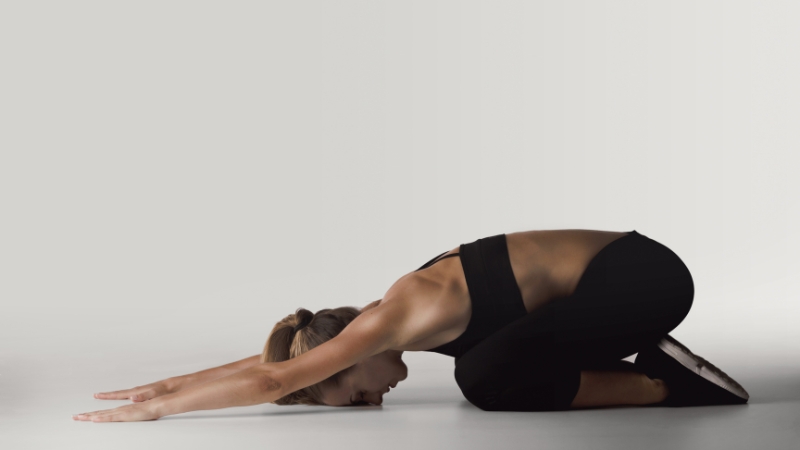
Final Thoughts
Related Posts:



